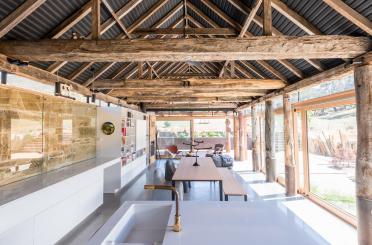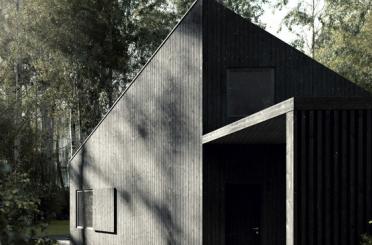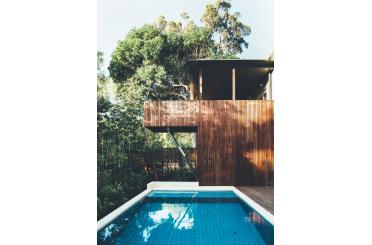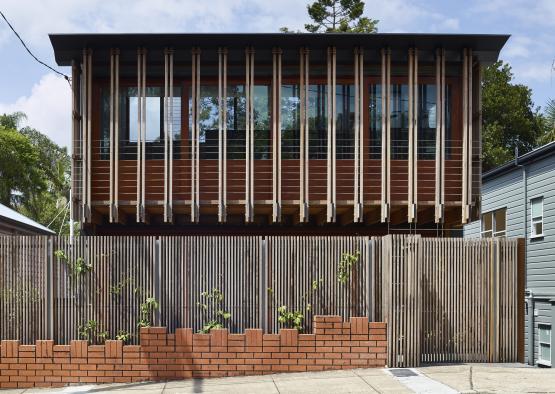
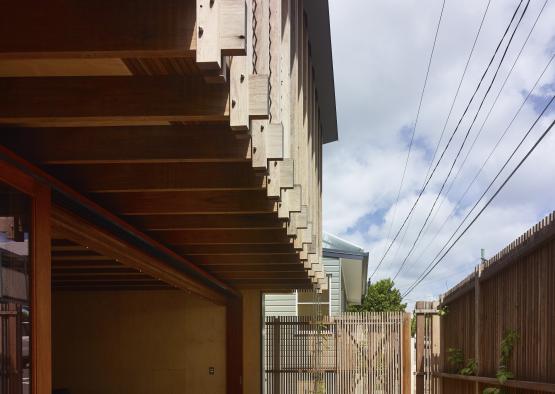
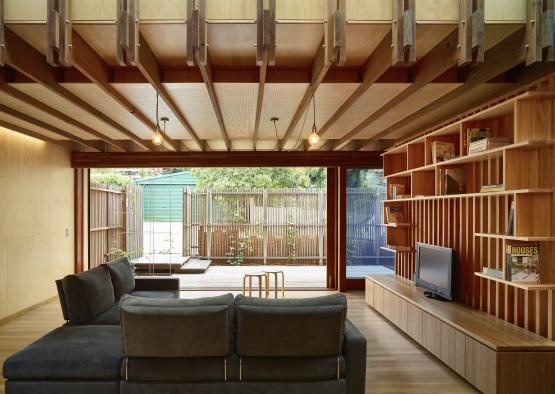
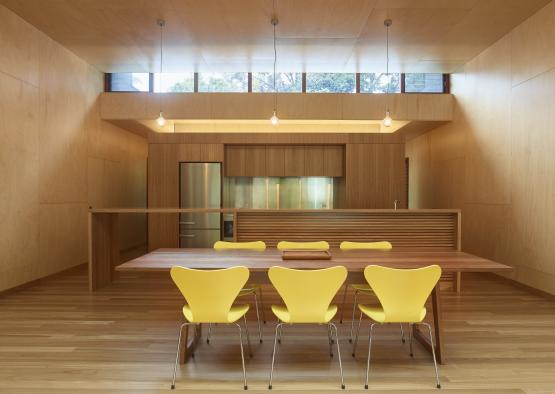
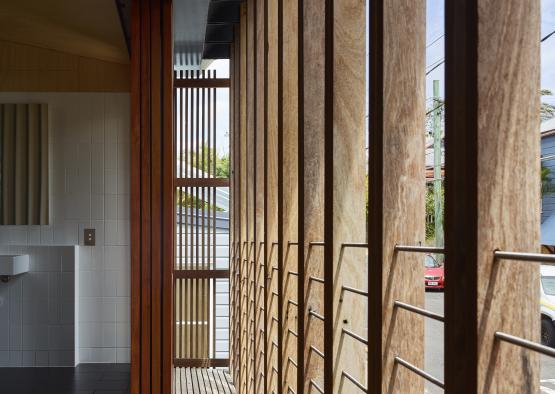
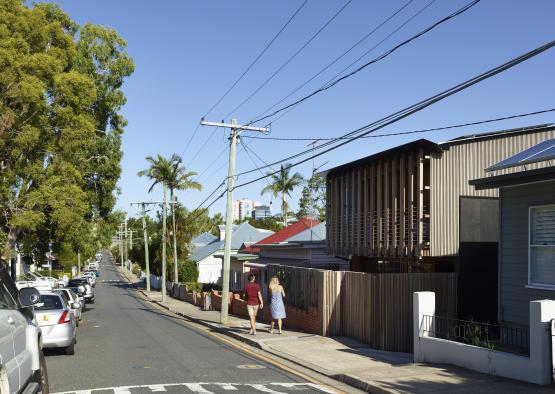
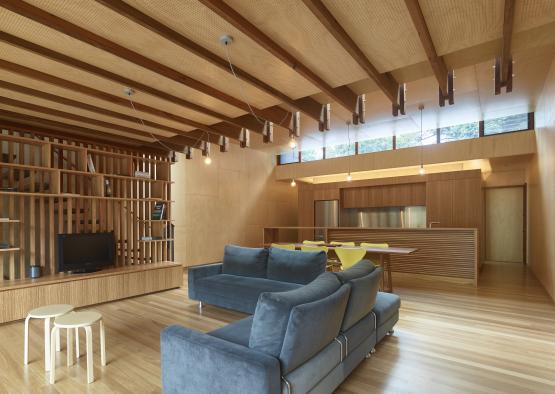
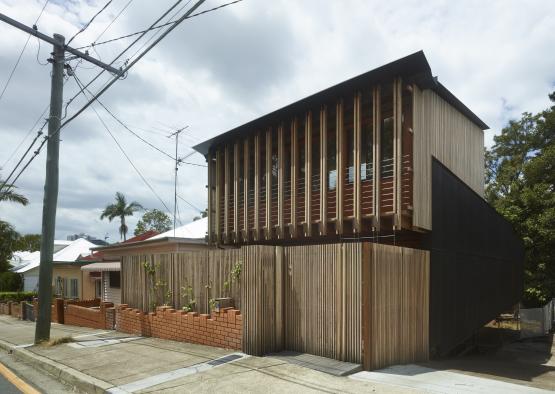
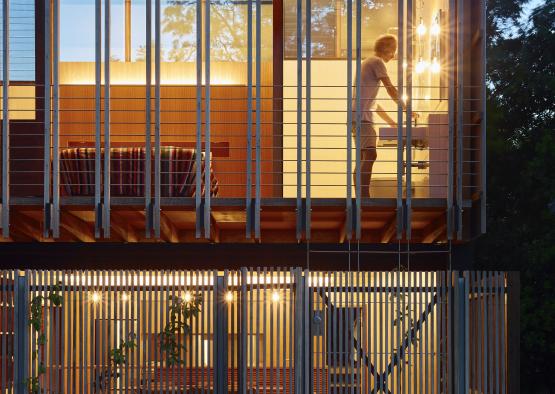
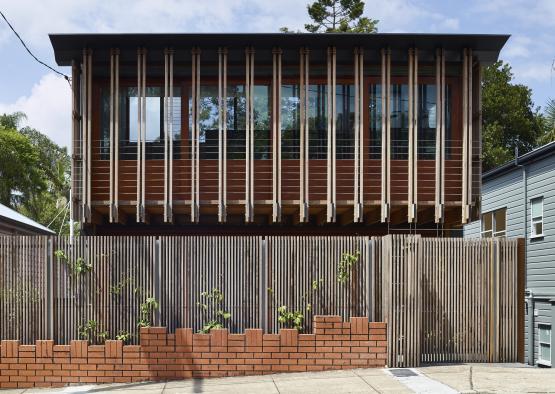
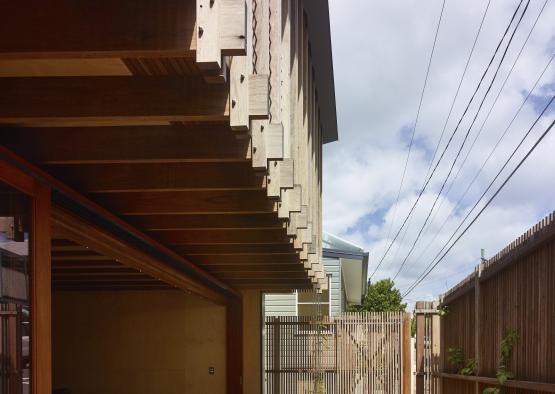
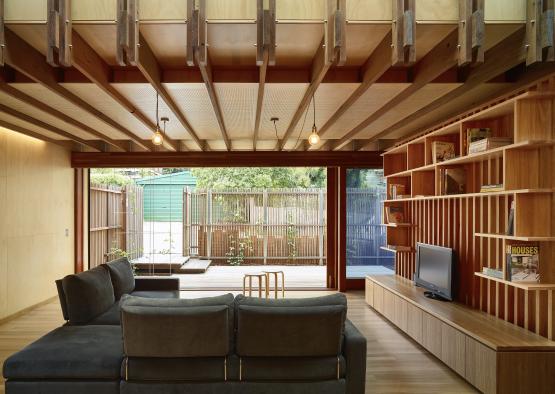

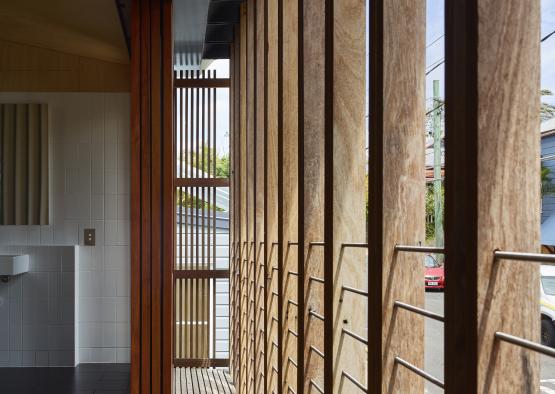
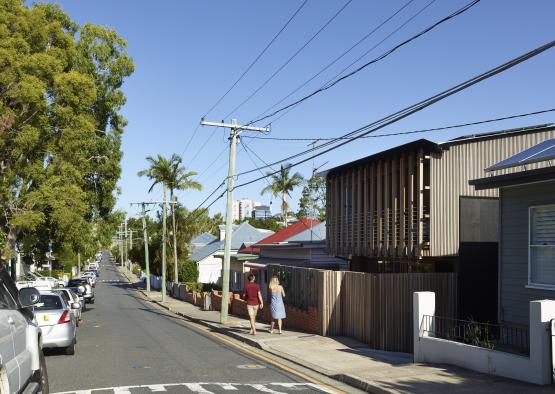
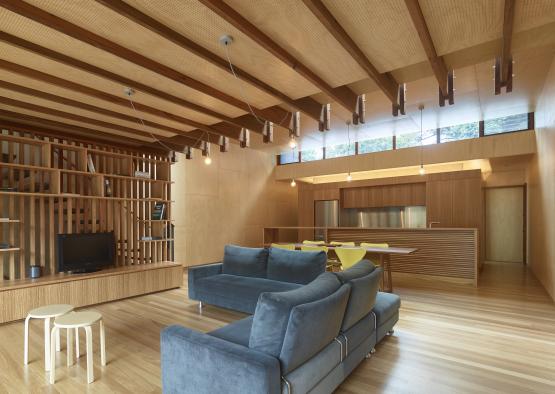
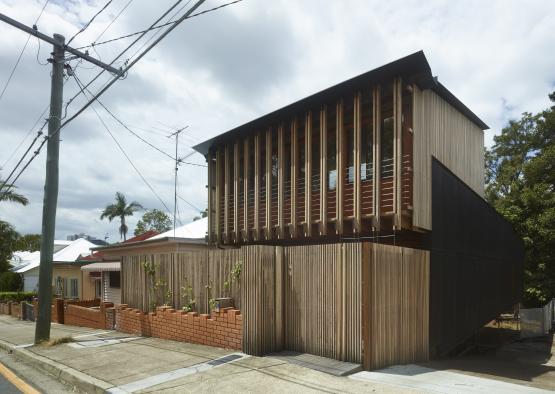
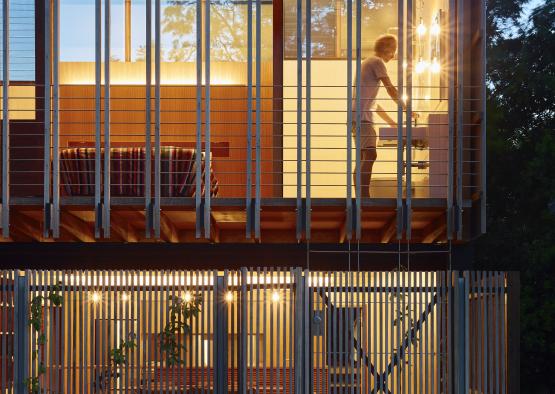
Overview
The 2016 Australian Timber Design Award for New Buildings – Residential Class 1 – was awarded to Richard Kirk Architect for West End House.
The West End House occupies a rare fragment of previously undeveloped land in the historically dense inner-city suburb. Located on a tight site, the residence is a finely crafted home that maximises light and ventilation while nestling smartly into the existing streetscape.
The plan takes cues from contemporary apartment design to organise space. Generous timber framed openings are provided to expand on internal volumes, borrowing external space and extending views.
Timber is central to the vision of the residence; it forms a contemporary interpretation of the architectural language typical of the area – the timber framed workers cottage.
The West End House takes a multifaceted approach to provide a holistic sustainability solution. The project utilises a number of standard environmental sustainability strategies such as energy efficiency, rainwater harvesting, solar power and natural daylighting. No mechanical ventilation is used within the residence with generous openings and ample insulation allowing breezes to maintain and regulate the ambient climate.
Importantly the West End House also addresses sustainability by providing a resilient design.
The residence attempts to re-invent the housing type particular to the area and provides an alternative solution for single residential development that improves upon existing amenity within the constraints of an historically dense neighbourhood.
The legacy of the project is to demonstrate the potential for innovation beyond the defined limits of established targets and to promote under-utilised but inherently sustainable local industry.
Structure
Materially the residence is a contemporary interpretation of the architectural language typical of the area – the timber framed worker’s cottage. Primarily the structure is a timber frame, supplemented by steel to efficiently occupy the site with minimal ground coverage. Stained plywood provides a durable finish to blank side elevations. Hardwood timber screening to the street and upper level bedroom affords privacy to the interior while maintaining light and ventilation. Internally the timber language is celebrated with clear finished plywood linings. Recycled structural timber joists and hangers are expressed, defining the intimacy of living areas and providing acoustic timbre. Matching timber cabinetry conceals lighting and services while organising adjacent spaces.
The use of locally produced and fabricated timber combined with the craft of carpentry maximised material efficiency & innovation and ensured the project saw no limitations in design or execution. The use of timber will allow for future re-use and contribute to the overall long term sustainability of the building.
The design approach was conscious of the need to deliver an efficiently constructed building. All elements of the building were rationalised from the building’s structural system, framing and cladding which resulted in the ease of construction, economy of materials and limited wastage.
The West End House was about promoting the craft of carpentry and engaging with renewable resources and local industry. This project benefited significantly from the conscientious and enthusiastic input by the carpentry team, whose role increased throughout construction.
The interior structural hanger:
The two rows of vertical 100 x 38 hardwood timber hangers form the vertical balustrade and structural skeleton for the mezzanine level whilst providing structural support to the roof.
The interior structural hanger acts in tension, hanging off a purlin, off the overall steel portal. The hanger is perpendicularly bolted onto dressed hardwood 250 x 38 timber joists supported by two laminated Hyne Beam 21 made from mixed Queensland hardwoods. The timber joists continue beyond the internal living area and cantilevers out to form the structural support for the upper floor balcony. The vertical timber balustrade perpendicularly bolts onto the timber joists, acting in compression to support the steel gutter and roof above.
The true merit of this piece is the cohesion between the vertical hangers, timber joists & Hyne Beam 21 with the rest of the building structure – the way separate elements connect to form a whole.
The attention to detail given to the execution of this piece can be seen in the timber joists. The exposed nature of this structure means any warping or excessive deflection will detract from the fine linear quality of the composition. The timber joists were installed to allow for a 10mm deflection in the purlin off the structural portal. Overtime, the mezzanine floor load will increase, thus the load on the steel portal will increase. The end of the timber joist (opposite the cantilever) is 10mm below where is sits on the Hyne Beam 21 to allow for the future deflection, to ensure the linear appearance will be maintained, to ensure the lines look “correct”.
The Staircase & Cabinet:
The open tread timber staircase commences from the Living Area on Level 1 up to the Main Bedroom on Level 2. The stair comprises of solid Blackbutt timber treads with a concealed steel stirrup support that is mounted within the wall frame on one side and integrated into the bespoke timber joinery on the other.
The bespoke New Guinea Rosewood TV cabinet timber structure and wall frame behind the plywood timber panels have been structurally set out to exactly match the positioning of the water jet cut steel stirrup for each individual tread. The rigorous process required precision in all the timber components. The plywood timber panels were constructed, deconstructed and reconstructed as part of the process.
The seamless integration of all the timber elements forms a lightweight, floating stair. The stair is paired with a 50mm round dowel New Guinea Rosewood handrail.
The Blackbutt timber TV cabinet assumes its timber form and setout from the structural requirements of the timber treads. The use of Blackbutt veneer conforms to the internal timber language.
The carefully considered construction and execution of the bespoke timber joinery pronounces the internal timber language by blurring the boundaries of joinery and house.
Exterior
Hardwood timber screening to the street and upper level bedroom affords privacy to the interior while maintaining light and ventilation. No mechanical ventilation is used within the residence with generous openings and ample insulation allowing breezes to maintain and regulate the ambient climate.
Interior
Internally the timber language is celebrated with clear finished plywood lining. All interior walls and ceilings are lined with 1200 x 2400 Hoop pine plywood sheets with 2mm expressed gap between sheets.
These panels are set out to be centrally positioned on the underside of the of mezzanine floor in between the structural hangers.
The extensive internal coverage of plywood panels provide acoustic treatment, uniquely defines the internal spaces and forms an integral part of the overall timber language of the residence.
The plywood timber panels required rigorous preparation and execution. The true merit to the end result is the overall accuracy of the panel installation overcoming natural building tolerances. The 2400 x 1200 x 9 plywood wall panels ran vertically with a 2mm expressed gap between sheets. All panels use expressed stainless steel dome head screw fixings, ensuring maximum future flexibility and maintenance access. The panels were set out from the “G” panel above the kitchen joinery; a centrally positioned setout point naturally minimises the opportunity for variations. The ceiling panels, also installed with a 2mm expressed gap between sheets, were installed first to reduce the visibility of the 1mm shadow line.
The plywood panel execution sought accuracy that extended beyond its function and onto other elements of the structure.

